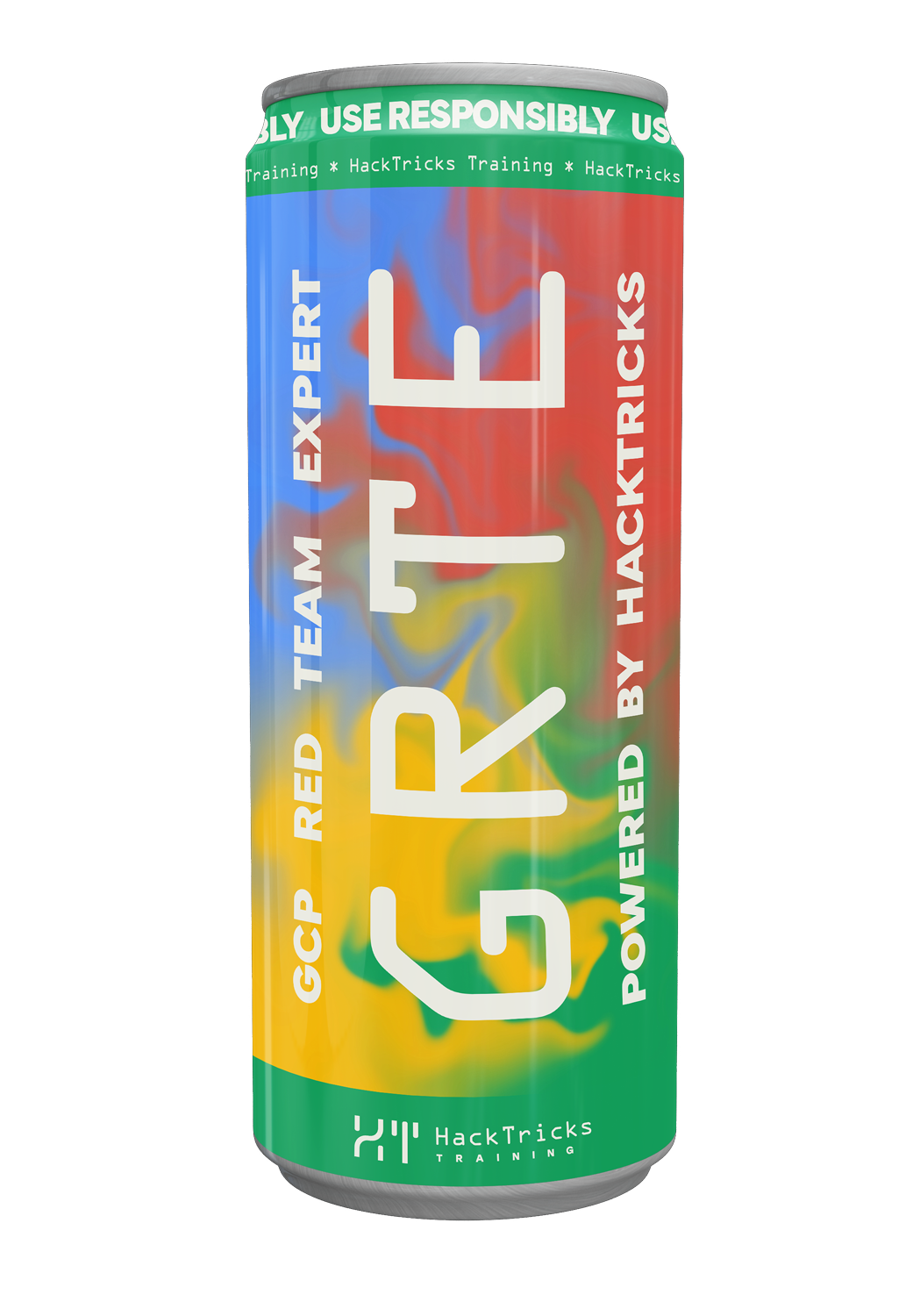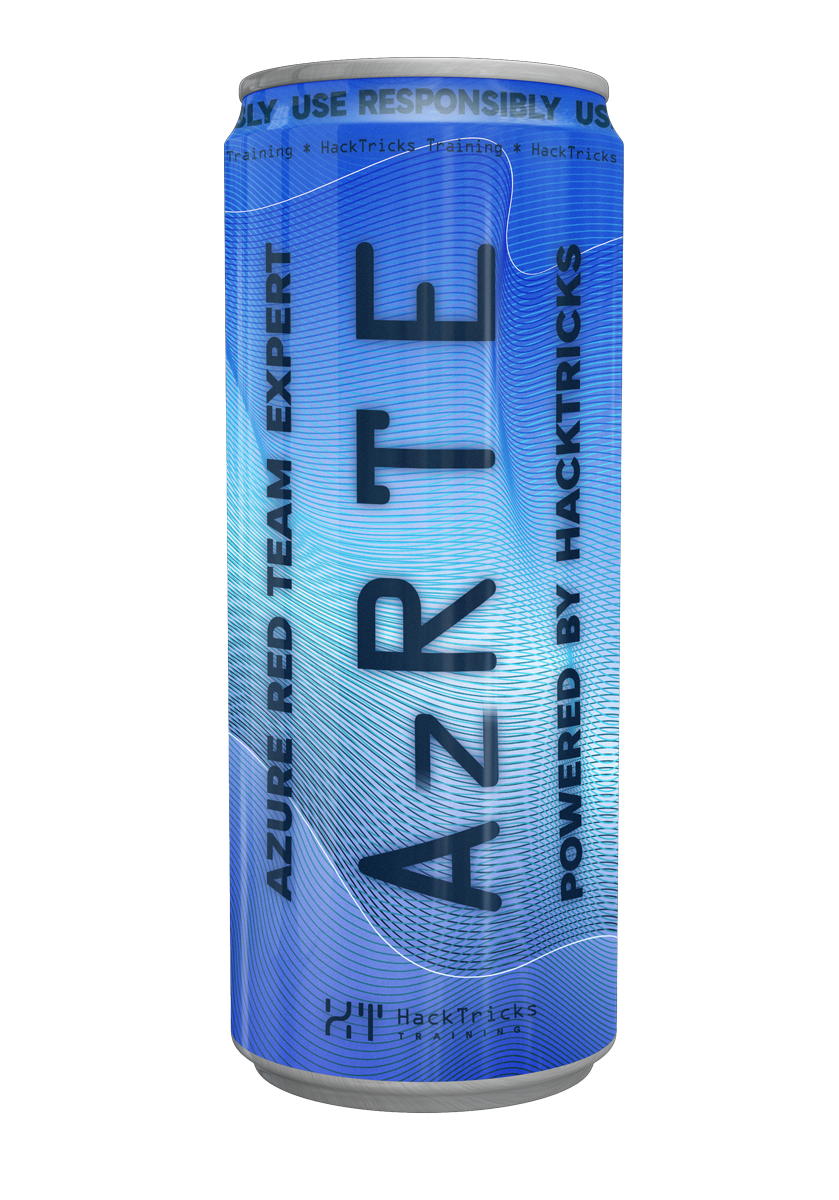Sicurezza Supabase
Reading time: 11 minutes
tip
Impara e pratica il hacking AWS: HackTricks Training AWS Red Team Expert (ARTE)
HackTricks Training AWS Red Team Expert (ARTE)
Impara e pratica il hacking GCP:  HackTricks Training GCP Red Team Expert (GRTE)
HackTricks Training GCP Red Team Expert (GRTE) Impara e pratica il hacking Azure:
Impara e pratica il hacking Azure:  HackTricks Training Azure Red Team Expert (AzRTE)
HackTricks Training Azure Red Team Expert (AzRTE)
Supporta HackTricks
- Controlla i piani di abbonamento!
- Unisciti al 💬 gruppo Discord o al gruppo telegram o seguici su Twitter 🐦 @hacktricks_live.
- Condividi trucchi di hacking inviando PR ai HackTricks e HackTricks Cloud repos su github.
Informazioni di base
Secondo la loro landing page: Supabase è un'alternativa open source a Firebase. Avvia il tuo progetto con un database Postgres, Authentication, instant APIs, Edge Functions, Realtime subscriptions, Storage, e Vector embeddings.
Sottodominio
Fondamentalmente quando viene creato un progetto, l'utente riceverà un sottodominio supabase.co come: jnanozjdybtpqgcwhdiz.supabase.co
Configurazione del database
tip
Questi dati sono accessibili da un link come https://supabase.com/dashboard/project/<project-id>/settings/database
Questo database verrà distribuito in una regione AWS e, per connettersi, sarebbe possibile farlo collegandosi a: postgres://postgres.jnanozjdybtpqgcwhdiz:[YOUR-PASSWORD]@aws-0-us-west-1.pooler.supabase.com:5432/postgres (questo è stato creato in us-west-1).
La password è una password scelta dall'utente in precedenza.
Pertanto, dato che il sottodominio è noto ed è usato come username e le region AWS sono limitate, potrebbe essere possibile provare a brute force the password.
Questa sezione contiene anche opzioni per:
- Reimpostare la password del database
- Configurare il connection pooling
- Configurare SSL: rifiutare le connessioni in plain-text (di default sono abilitate)
- Configurare la dimensione del Disk
- Applicare restrizioni e ban di rete
Configurazione API
tip
Questi dati sono accessibili da un link come https://supabase.com/dashboard/project/<project-id>/settings/api
L'URL per accedere all'API supabase del tuo progetto sarà: https://jnanozjdybtpqgcwhdiz.supabase.co.
anon api keys
Genererà anche un'anon API key (role: "anon"), come: eyJhbGciOiJIUzI1NiIsInR5cCI6IkpXVCJ9.eyJpc3MiOiJzdXBhYmFzZSIsInJlZiI6ImpuYW5vemRyb2J0cHFnY3doZGl6Iiwicm9sZSI6ImFub24iLCJpYXQiOjE3MTQ5OTI3MTksImV4cCI6MjAzMDU2ODcxOX0.sRN0iMGM5J741pXav7UxeChyqBE9_Z-T0tLA9Zehvqk che l'applicazione dovrà usare per contattare l'API esposta nel nostro esempio in
È possibile trovare l'API REST per contattare questa API nei docs, ma gli endpoint più interessanti sarebbero:
Registrazione (/auth/v1/signup)
``` POST /auth/v1/signup HTTP/2 Host: id.io.net Content-Length: 90 X-Client-Info: supabase-js-web/2.39.2 Sec-Ch-Ua: "Not-A.Brand";v="99", "Chromium";v="124" Sec-Ch-Ua-Mobile: ?0 Authorization: Bearer eyJhbGciOiJIUzI1NiIsInR5cCI6IkpXVCJ9.eyJpc3MiOiJzdXBhYmFzZSIsInJlZiI6ImpuYW5vemRyb2J0cHFnY3doZGl6Iiwicm9sZSI6ImFub24iLCJpYXQiOjE3MTQ5OTI3MTksImV4cCI6MjAzMDU2ODcxOX0.sRN0iMGM5J741pXav7UxeChyqBE9_Z-T0tLA9Zehvqk User-Agent: Mozilla/5.0 (Windows NT 10.0; Win64; x64) AppleWebKit/537.36 (KHTML, like Gecko) Chrome/124.0.6367.60 Safari/537.36 Content-Type: application/json;charset=UTF-8 Apikey: eyJhbGciOiJIUzI1NiIsInR5cCI6IkpXVCJ9.eyJpc3MiOiJzdXBhYmFzZSIsInJlZiI6ImpuYW5vemRyb2J0cHFnY3doZGl6Iiwicm9sZSI6ImFub24iLCJpYXQiOjE3MTQ5OTI3MTksImV4cCI6MjAzMDU2ODcxOX0.sRN0iMGM5J741pXav7UxeChyqBE9_Z-T0tLA9Zehvqk Sec-Ch-Ua-Platform: "macOS" Accept: */* Origin: https://cloud.io.net Sec-Fetch-Site: same-site Sec-Fetch-Mode: cors Sec-Fetch-Dest: empty Referer: https://cloud.io.net/ Accept-Encoding: gzip, deflate, br Accept-Language: en-GB,en-US;q=0.9,en;q=0.8 Priority: u=1, i{"email":"test@exmaple.com","password":"SomeCOmplexPwd239."}
</details>
<details>
<summary>Accesso (/auth/v1/token?grant_type=password)</summary>
POST /auth/v1/token?grant_type=password HTTP/2 Host: hypzbtgspjkludjcnjxl.supabase.co Content-Length: 80 X-Client-Info: supabase-js-web/2.39.2 Sec-Ch-Ua: "Not-A.Brand";v="99", "Chromium";v="124" Sec-Ch-Ua-Mobile: ?0 Authorization: Bearer eyJhbGciOiJIUzI1NiIsInR5cCI6IkpXVCJ9.eyJpc3MiOiJzdXBhYmFzZSIsInJlZiI6ImpuYW5vemRyb2J0cHFnY3doZGl6Iiwicm9sZSI6ImFub24iLCJpYXQiOjE3MTQ5OTI3MTksImV4cCI6MjAzMDU2ODcxOX0.sRN0iMGM5J741pXav7UxeChyqBE9_Z-T0tLA9Zehvqk User-Agent: Mozilla/5.0 (Windows NT 10.0; Win64; x64) AppleWebKit/537.36 (KHTML, like Gecko) Chrome/124.0.6367.60 Safari/537.36 Content-Type: application/json;charset=UTF-8 Apikey: eyJhbGciOiJIUzI1NiIsInR5cCI6IkpXVCJ9.eyJpc3MiOiJzdXBhYmFzZSIsInJlZiI6ImpuYW5vemRyb2J0cHFnY3doZGl6Iiwicm9sZSI6ImFub24iLCJpYXQiOjE3MTQ5OTI3MTksImV4cCI6MjAzMDU2ODcxOX0.sRN0iMGM5J741pXav7UxeChyqBE9_Z-T0tLA9Zehvqk Sec-Ch-Ua-Platform: "macOS" Accept: / Origin: https://cloud.io.net Sec-Fetch-Site: same-site Sec-Fetch-Mode: cors Sec-Fetch-Dest: empty Referer: https://cloud.io.net/ Accept-Encoding: gzip, deflate, br Accept-Language: en-GB,en-US;q=0.9,en;q=0.8 Priority: u=1, i
{"email":"test@exmaple.com","password":"SomeCOmplexPwd239."}
</details>
Quindi, ogni volta che scopri un client che usa supabase con il sottodominio a loro assegnato (è possibile che un sottodominio dell'azienda abbia un CNAME puntato sul loro sottodominio supabase), potresti provare a **creare un nuovo account sulla piattaforma usando la supabase API**.
### secret / service_role api keys
Verrà anche generata una secret API key con **`role: "service_role"`**. Questa API key deve rimanere segreta perché sarà in grado di bypassare **Row Level Security**.
La API key appare così: `eyJhbGciOiJIUzI1NiIsInR5cCI6IkpXVCJ9.eyJpc3MiOiJzdXBhYmFzZSIsInJlZiI6ImpuYW5vemRyb2J0cHFnY3doZGl6Iiwicm9sZSI6InNlcnZpY2Vfcm9sZSIsImlhdCI6MTcxNDk5MjcxOSwiZXhwIjoyMDMwNTY4NzE5fQ.0a8fHGp3N_GiPq0y0dwfs06ywd-zhTwsm486Tha7354`
### JWT Secret
Un **JWT Secret** verrà inoltre generato così l'applicazione può **creare e firmare JWT personalizzati**.
## Authentication
### Signups
<div class="mdbook-alerts mdbook-alerts-tip">
<p class="mdbook-alerts-title">
<span class="mdbook-alerts-icon"></span>
tip
</p>
Per **default** supabase permetterà ai **nuovi utenti di creare account** sul tuo progetto usando gli endpoint API menzionati in precedenza.
</div>
Tuttavia, questi nuovi account, per impostazione predefinita, **dovranno convalidare il loro indirizzo email** per poter effettuare il login nell'account. È possibile abilitare **"Allow anonymous sign-ins"** per consentire alle persone di effettuare il login senza verificare l'indirizzo email. Questo potrebbe concedere accesso a **dati inaspettati** (ottenendo i ruoli `public` e `authenticated`).\
Questa è una pessima idea perché supabase addebita per utente attivo, quindi le persone potrebbero creare utenti, effettuare il login e supabase addebiterà per quelli:
<figure><img src="../images/image (1) (1) (1) (1) (1) (1).png" alt=""><figcaption></figcaption></figure>
#### Auth: Server-side signup enforcement
Nascondere il pulsante di registrazione nel frontend non è sufficiente. Se il **Auth server continua a permettere le registrazioni**, un attaccante può chiamare direttamente l'API con la public `anon` key e creare utenti arbitrari.
Test rapido (da un client non autenticato):
<div class="codeblock_filename_container"><span class="codeblock_filename_inner hljs">bash</span></div>
```bash
curl -X POST \
-H "apikey: <SUPABASE_ANON_KEY>" \
-H "Authorization: Bearer <SUPABASE_ANON_KEY>" \
-H "Content-Type: application/json" \
-d '{"email":"attacker@example.com","password":"Sup3rStr0ng!"}' \
https://<PROJECT_REF>.supabase.co/auth/v1/signup
Expected hardening:
- Disable email/password signups in the Dashboard: Authentication → Providers → Email → Disable sign ups (invite-only), or set the equivalent GoTrue setting.
- Verify the API now returns 4xx to the previous call and no new user is created.
- If you rely on invites or SSO, ensure all other providers are disabled unless explicitly needed.
RLS and Views: Bypass di scrittura via PostgREST
Using a Postgres VIEW to “hide” sensitive columns and exposing it via PostgREST can change how privileges are evaluated. In PostgreSQL:
- Ordinary views execute with the privileges of the view owner by default (definer semantics). In PG ≥15 you can opt into
security_invoker. - Row Level Security (RLS) applies on base tables. Table owners bypass RLS unless
FORCE ROW LEVEL SECURITYis set on the table. - Updatable views can accept INSERT/UPDATE/DELETE that are then applied to the base table. Without
WITH CHECK OPTION, writes that don’t match the view predicate may still succeed.
Risk pattern observed in the wild:
- A reduced-column VIEW is exposed through Supabase REST and granted to
anon/authenticated. - PostgREST allows DML on the updatable VIEW and the operation is evaluated with the view owner’s privileges, effectively bypassing the intended RLS policies on the base table.
- Result: low-privileged clients can mass-edit rows (e.g., profile bios/avatars) they should not be able to modify.
Illustrative write via view (attempted from a public client):
curl -X PATCH \
-H "apikey: <SUPABASE_ANON_KEY>" \
-H "Authorization: Bearer <SUPABASE_ANON_KEY>" \
-H "Content-Type: application/json" \
-H "Prefer: return=representation" \
-d '{"bio":"pwned","avatar_url":"https://i.example/pwn.png"}' \
"https://<PROJECT_REF>.supabase.co/rest/v1/users_view?id=eq.<victim_user_id>"
Checklist di hardening per views e RLS:
- Preferisci esporre le tabelle base con permessi espliciti, minimo privilegio e politiche RLS precise.
- Se devi esporre una view:
- Rendila non-updatable (es., includendo espressioni/join) o nega
INSERT/UPDATE/DELETEsulla view a tutti i ruoli non attendibili. - Forza
ALTER VIEW <v> SET (security_invoker = on)in modo che vengano usati i privilegi dell'invocatore invece di quelli del proprietario. - Sulle tabelle base, usa
ALTER TABLE <t> FORCE ROW LEVEL SECURITY;in modo che anche i proprietari siano soggetti a RLS. - Se permetti scritture tramite una view updatable, aggiungi
WITH [LOCAL|CASCADED] CHECK OPTIONe politiche RLS complementari sulle tabelle base per garantire che solo le righe consentite possano essere scritte/modificate. - In Supabase, evita di concedere a
anon/authenticatedqualsiasi privilegio di scrittura sulle view a meno che tu non abbia verificato il comportamento end-to-end con test.
- Rendila non-updatable (es., includendo espressioni/join) o nega
Detection tip:
- Da
anone da un utente di testauthenticated, prova tutte le operazioni CRUD contro ogni tabella/view esposta. Qualsiasi scrittura riuscita che ti aspettavi fosse negata indica una misconfigurazione.
Probing CRUD guidato da OpenAPI dai ruoli anon/auth
PostgREST espone un documento OpenAPI che puoi usare per enumerare tutte le risorse REST, quindi sondare automaticamente le operazioni consentite dai ruoli a basso privilegio.
Recupera l'OpenAPI (funziona con la public anon key):
curl -s https://<PROJECT_REF>.supabase.co/rest/v1/ \
-H "apikey: <SUPABASE_ANON_KEY>" \
-H "Authorization: Bearer <SUPABASE_ANON_KEY>" \
-H "Accept: application/openapi+json" | jq '.paths | keys[]'
Probe pattern (examples):
- Leggi una singola riga (atteso 401/403/200 a seconda di RLS):
curl -s "https://<PROJECT_REF>.supabase.co/rest/v1/<table>?select=*&limit=1" \
-H "apikey: <SUPABASE_ANON_KEY>" \
-H "Authorization: Bearer <SUPABASE_ANON_KEY>"
- Verificare che UPDATE sia bloccato (usa un filtro non esistente per evitare di alterare i dati durante i test):
curl -i -X PATCH \
-H "apikey: <SUPABASE_ANON_KEY>" \
-H "Authorization: Bearer <SUPABASE_ANON_KEY>" \
-H "Content-Type: application/json" \
-H "Prefer: return=minimal" \
-d '{"__probe":true}' \
"https://<PROJECT_REF>.supabase.co/rest/v1/<table_or_view>?id=eq.00000000-0000-0000-0000-000000000000"
- Test INSERT è bloccato:
curl -i -X POST \
-H "apikey: <SUPABASE_ANON_KEY>" \
-H "Authorization: Bearer <SUPABASE_ANON_KEY>" \
-H "Content-Type: application/json" \
-H "Prefer: return=minimal" \
-d '{"__probe":true}' \
"https://<PROJECT_REF>.supabase.co/rest/v1/<table_or_view>"
- Verifica che DELETE sia bloccato:
curl -i -X DELETE \
-H "apikey: <SUPABASE_ANON_KEY>" \
-H "Authorization: Bearer <SUPABASE_ANON_KEY>" \
"https://<PROJECT_REF>.supabase.co/rest/v1/<table_or_view>?id=eq.00000000-0000-0000-0000-000000000000"
Recommendations:
- Automatizza le probe precedenti per entrambi
anone un utente minimamenteauthenticatede integrale nella CI per intercettare regressioni. - Tratta ogni table/view/function esposta come una superficie di prima classe. Non presumere che una view “inherits” lo stesso posture RLS delle sue tabelle di base.
Passwords & sessions
È possibile indicare la lunghezza minima della password (di default), i requisiti (nessuno di default) e disallow to use leaked passwords.
È raccomandato migliorare i requisiti poiché quelli di default sono deboli.
- Sessioni utente: È possibile configurare come funzionano le user sessions (timeouts, 1 session per user...)
- Bot and Abuse Protection: È possibile abilitare Captcha.
SMTP Settings
È possibile impostare un SMTP per inviare email.
Advanced Settings
- Impostare il tempo di scadenza degli access tokens (3600 by default)
- Abilitare il rilevamento e la revoca dei refresh tokens potenzialmente compromessi e timeout
- MFA: Indicare quanti fattori MFA possono essere enrolati contemporaneamente per utente (10 by default)
- Max Direct Database Connections: Numero massimo di connessioni usate per l'auth (10 by default)
- Max Request Duration: Tempo massimo consentito per una richiesta di Auth (10s by default)
Storage
tip
Supabase allows to store files and make them accesible over a URL (it uses S3 buckets).
- Impostare il limite di dimensione per l'upload dei file (default è 50MB)
- La connessione S3 è fornita con una URL come:
https://jnanozjdybtpqgcwhdiz.supabase.co/storage/v1/s3 - È possibile request S3 access key che sono formate da un
access key ID(e.g.a37d96544d82ba90057e0e06131d0a7b) e unsecret access key(e.g.58420818223133077c2cec6712a4f909aec93b4daeedae205aa8e30d5a860628)
Edge Functions
È possibile anche store secrets in supabase che saranno accessible by edge functions (possono essere create e cancellate dal web, ma non è possibile accedere direttamente al loro valore).
References
- Building Hacker Communities: Bug Bounty Village, getDisclosed’s Supabase Misconfig, and the LHE Squad (Ep. 133) – YouTube
- Critical Thinking Podcast – Episode 133 page
- Supabase: Row Level Security (RLS)
- PostgreSQL: Row Security Policies
- PostgreSQL: CREATE VIEW (security_invoker, check option)
- PostgREST: OpenAPI documentation
tip
Impara e pratica il hacking AWS: HackTricks Training AWS Red Team Expert (ARTE)
HackTricks Training AWS Red Team Expert (ARTE)
Impara e pratica il hacking GCP:  HackTricks Training GCP Red Team Expert (GRTE)
HackTricks Training GCP Red Team Expert (GRTE) Impara e pratica il hacking Azure:
Impara e pratica il hacking Azure:  HackTricks Training Azure Red Team Expert (AzRTE)
HackTricks Training Azure Red Team Expert (AzRTE)
Supporta HackTricks
- Controlla i piani di abbonamento!
- Unisciti al 💬 gruppo Discord o al gruppo telegram o seguici su Twitter 🐦 @hacktricks_live.
- Condividi trucchi di hacking inviando PR ai HackTricks e HackTricks Cloud repos su github.
 HackTricks Cloud
HackTricks Cloud